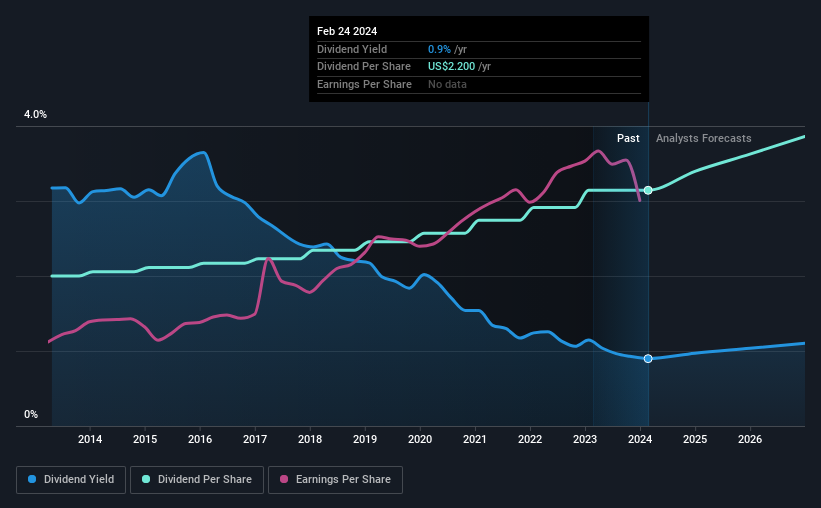Why You Might Be Interested In Arthur J. Gallagher & Co. (NYSE:AJG) For Its Upcoming Dividend
Regular readers will know that we love our dividends at Simply Wall St, which is why it's exciting to see Arthur J. Gallagher & Co. (NYSE:AJG) is about to trade ex-dividend in the next 4 days. The ex-dividend date is one business day before the record date, which is the cut-off date for shareholders to be present on the company's books to be eligible for a dividend payment. The ex-dividend date is important because any transaction on a stock needs to have been settled before the record date in order to be eligible for a dividend. This means that investors who purchase Arthur J. Gallagher's shares on or after the 29th of February will not receive the dividend, which will be paid on the 15th of March.
The company's next dividend payment will be US$0.60 per share. Last year, in total, the company distributed US$2.20 to shareholders. Last year's total dividend payments show that Arthur J. Gallagher has a trailing yield of 0.9% on the current share price of US$245.00. If you buy this business for its dividend, you should have an idea of whether Arthur J. Gallagher's dividend is reliable and sustainable. That's why we should always check whether the dividend payments appear sustainable, and if the company is growing.
Check out our latest analysis for Arthur J. Gallagher
Dividends are usually paid out of company profits, so if a company pays out more than it earned then its dividend is usually at greater risk of being cut. That's why it's good to see Arthur J. Gallagher paying out a modest 49% of its earnings.
Generally speaking, the lower a company's payout ratios, the more resilient its dividend usually is.
Click here to see the company's payout ratio, plus analyst estimates of its future dividends.
Have Earnings And Dividends Been Growing?
Stocks in companies that generate sustainable earnings growth often make the best dividend prospects, as it is easier to lift the dividend when earnings are rising. If earnings decline and the company is forced to cut its dividend, investors could watch the value of their investment go up in smoke. This is why it's a relief to see Arthur J. Gallagher earnings per share are up 5.2% per annum over the last five years.
Many investors will assess a company's dividend performance by evaluating how much the dividend payments have changed over time. Arthur J. Gallagher has delivered 4.6% dividend growth per year on average over the past 10 years. We're glad to see dividends rising alongside earnings over a number of years, which may be a sign the company intends to share the growth with shareholders.
The Bottom Line
Is Arthur J. Gallagher worth buying for its dividend? It has been growing its earnings per share somewhat in recent years, although it reinvests more than half its earnings in the business, which could suggest there are some growth projects that have not yet reached fruition. Overall, Arthur J. Gallagher looks like a promising dividend stock in this analysis, and we think it would be worth investigating further.
While it's tempting to invest in Arthur J. Gallagher for the dividends alone, you should always be mindful of the risks involved. To help with this, we've discovered 4 warning signs for Arthur J. Gallagher that you should be aware of before investing in their shares.
A common investing mistake is buying the first interesting stock you see. Here you can find a full list of high-yield dividend stocks.
Have feedback on this article? Concerned about the content? Get in touch with us directly. Alternatively, email editorial-team (at) simplywallst.com.
This article by Simply Wall St is general in nature. We provide commentary based on historical data and analyst forecasts only using an unbiased methodology and our articles are not intended to be financial advice. It does not constitute a recommendation to buy or sell any stock, and does not take account of your objectives, or your financial situation. We aim to bring you long-term focused analysis driven by fundamental data. Note that our analysis may not factor in the latest price-sensitive company announcements or qualitative material. Simply Wall St has no position in any stocks mentioned.

